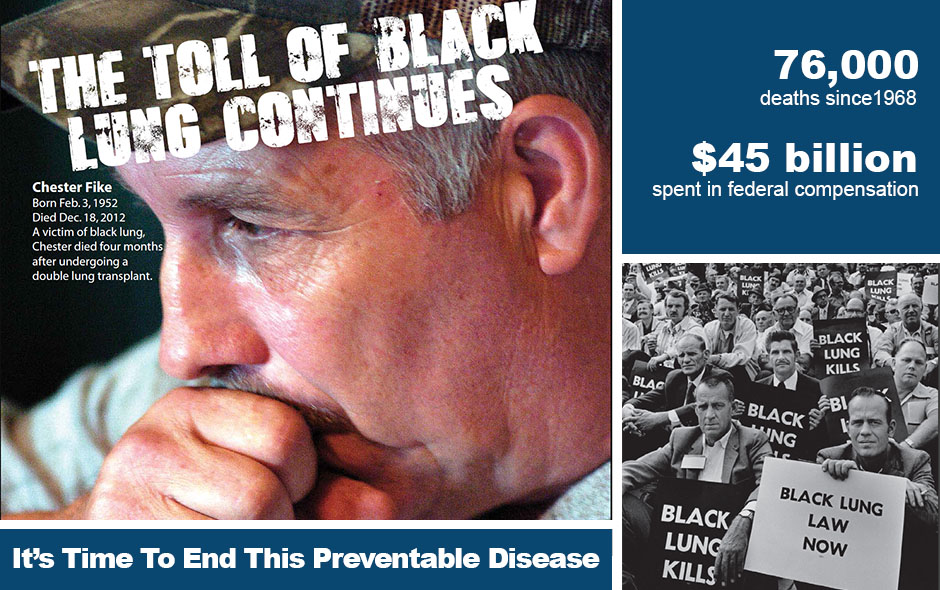MSHA’s Respirable Coal Dust Rule Is Better Protecting Our Nation’s Miners
On August 1, 2014, MSHA’s landmark respirable dust rule went into effect, adding a number of increased protections for coal miners and closing several loopholes that masked their exposure to unhealthy coal mine dust. Respirable coal dust sampling results for the first year of the rule—containing those new protections—show that compliance is achievable and, most importantly, that the nation’s coal miners are now, more than ever before, better protected from the debilitating and deadly black lung disease.
Continuous Personal Dust Monitoring Certification Required Every Three Years
To maintain Continuous Personal Dust Monitor (CPDM) certification in the tasks the certified person performs, every three years, a person must pass the applicable MSHA examination demonstrating competency in sampling procedures under final § 70.202(c) or competency in maintenance and calibration under final § 70.203(c).
MSHA began the initial CPDM Sampling and Certification Courses of Instruction and then testing in May of 2015. In order to keep industry compliant and able to fulfill obligations to sample for respirable coal mine dust, these certifications must be renewed. Certification will expire in the month in which it was obtained, after three years. For example, a certification attained August 1, 2015 must be renewed before September 1, 2018.
Certified persons only need to complete the test and any hands on demonstration of competency in order to renew, if their certification has not expired.
To schedule certification testing, please contact the appropriate District Office, National Mine Academy, or MSHA Headquarters person(s).
Registration Information and Contacts for District Coal Health Supervisors and Health Specialists
Phase III Now in Effect
On August 1, 2016, Phase III of MSHA’s respirable dust rule went into effect.
- The concentration limits for respirable coal mine dust are lowered from 2.0 milligrams of dust per cubic meter of air (mg/m3) to 1.5 mg/m3 at underground and surface coal mines
- The concentration limits for respirable coal mine dust are lowered from 1.0 mg/m3 to 0.5 mg/m3 for intake air at underground mines and for part 90 miners (coal miners who have evidence of the development of pneumoconiosis)
Lowering the concentration of respirable coal mine dust in the air that miners breathe is the most effective means of preventing diseases caused by excessive exposure to such dust.
News & Outreach
- The Complete Quartz dataset lists all operator and inspector dust samples taken and analyzed for quartz from 1986 to the present. It includes information that already is on the Quartz Samples dataset on the MSHA website, such as cassette numbers, date the sample was taken, quartz percentage, sample type, occupation codes related to the person or area sampled and mine information. In this compilation, MSHA has included additional information that users previously had to cross reference from other datasets or calculate themselves. Included is mine name, quartz concentration (µg/m3), and respirable dust concentration (mg/m3).
- [Posted 12-16-2016]
Coal mine operators can now correct CPDM samples that have been rejected by MSHA
- [Posted 3-25-2016]
Respirable Dust Rule Phase II Stakeholder Meeting was held at the Mine Academy in Beckley, WV on March 24, 2016.
Stakeholder Meeting Presentation
Overview of the Dust Rule, Phase II Presentation
- [Posted 1-21-2016]
Notice Regarding Voided Samples from February through March 2016 - [Posted 8-18-2015]
Respirable Dust Rule One-Year Anniversary
Learn More about the Final Rule
The respirable dust rule lowers the concentration of harmful respirable coal mine dust that causes black lung. It takes a comprehensive approach that includes:
- Increased sampling by mine operators
- Use of new technology for real-time sampling results
- Immediate corrective action when excessive dust levels are found
- Determination of noncompliance based on a single MSHA sample
- Reduced dust standards.
The rule took effect August 1, 2014, with some components phased in over the following two years. Proposed in 2010, the rule builds on years of research and was developed with the input of industry, labor, and health professionals. It is the centerpiece of the agency's campaign to end black lung, launched in 2009.
- Read the Final Rule
- Access the Rule’s Regulatory Economic Analysis
- Quantitative Risk Assessment in Support of the Final Rule
- Final Rule Fact sheet
- Summary of Major Provisions and Effective Dates
- Dust Sampling and Compliance Overview
- Questions & Answers about the Final Rule
- Frequently Asked Questions from Stakeholders

